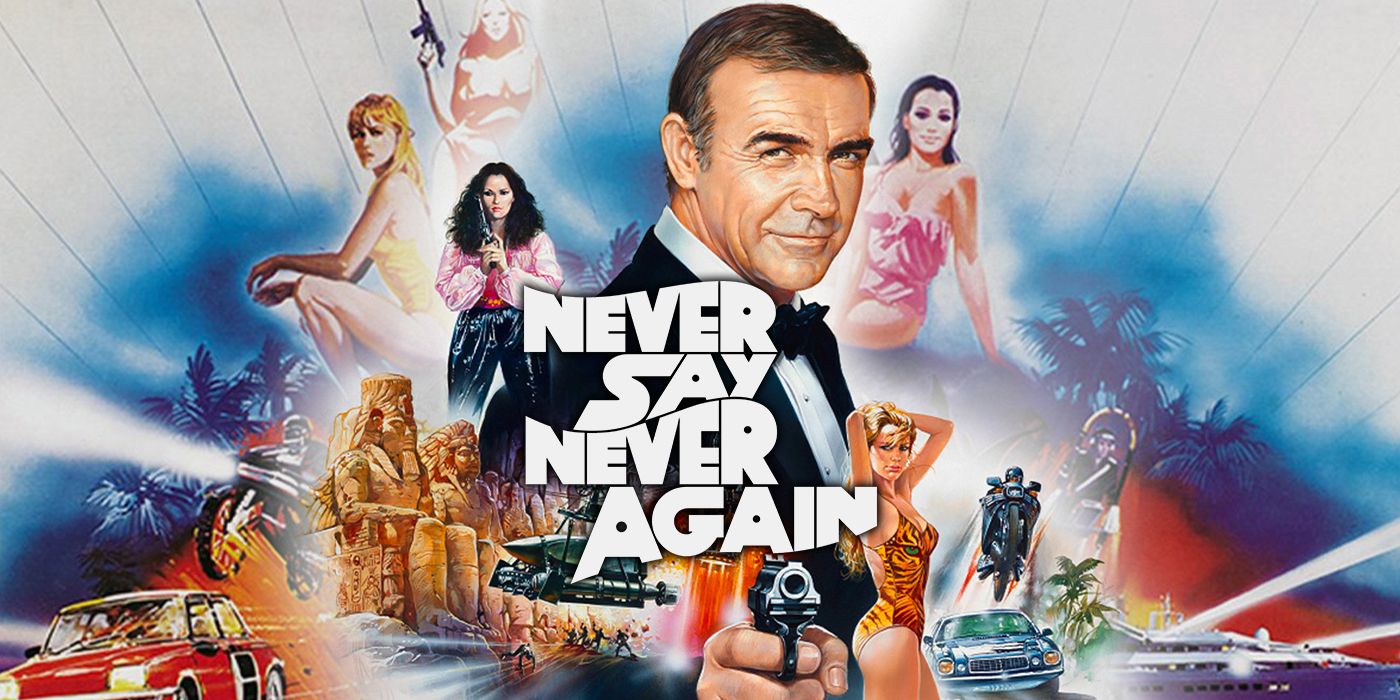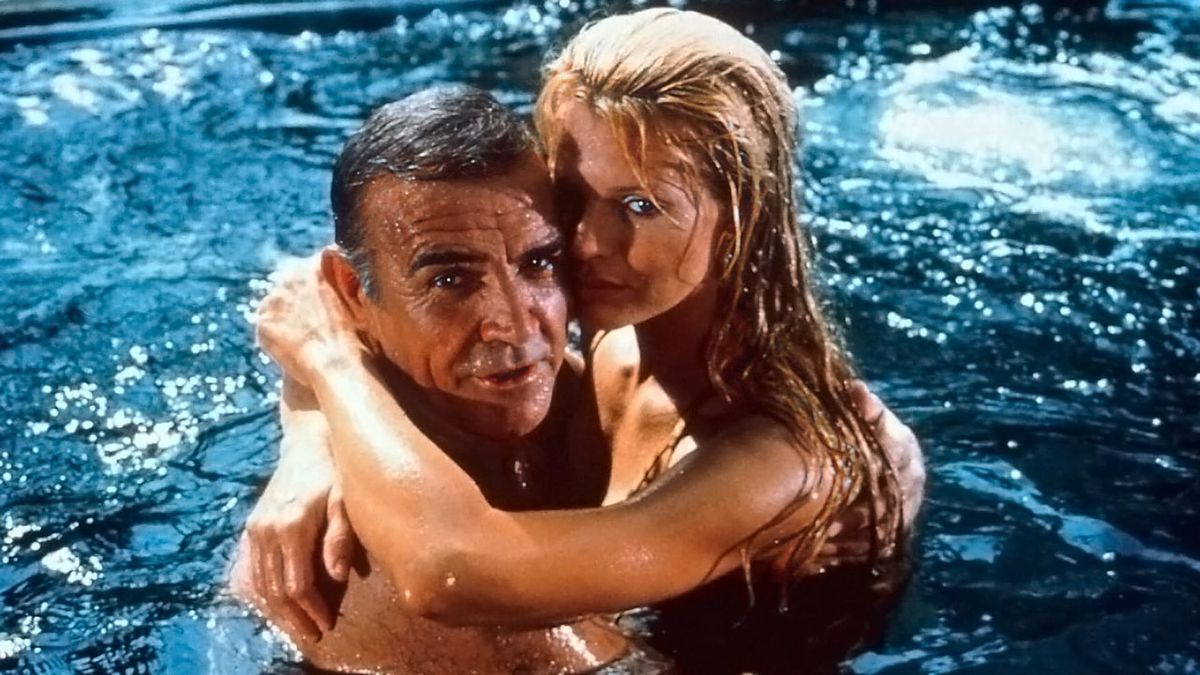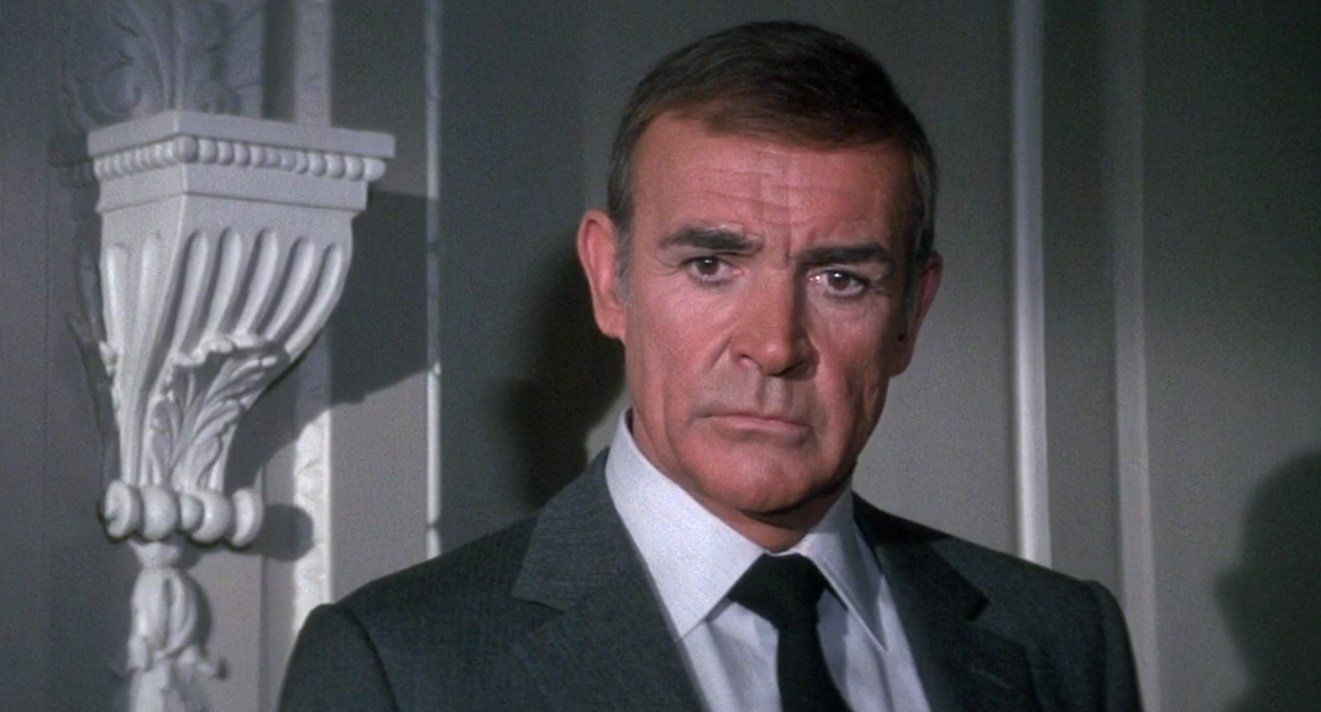In addition to the core film franchise produced by the Broccoli family, two unofficial James Bond films produced outside of the EON label were created due to wrinkles within licensing contracts. Rival producer Charles K. Feldman produced a parodical version of Casino Royale in 1967 after the Broccolis chose to adapt Dr. No instead of Ian Fleming’s first Bond novel, with EON eventually earning back the rights to 007’s origin story. It’s an interesting history behind a not-very-interesting movie; the lazy approach to a spy movie spoof was tiresome in 1967, and any initial amusement has completely evaporated with age. At 131 minutes and cameos in place of jokes, Casino Royale is borderline unwatchable.
The other non-EON film is more interesting. Sean Connery’s fourth Bond film Thunderball was based on a novel co-written by Fleming and Kevin McClory, who sued for legal rights to the adaptation and set up the unofficial remake Never Say Never Again at Jack Schwartzman’s Taliafilm. Irvin Kershner set the project as his first film after The Empire Strike Back and Connery returned after closing his run twelve years earlier with Diamonds Are Forever. It resulted in a battle of the Bonds for box office supremacy of 1983, as Never Say Never Again was released in fall with Roger Moore’s Octopussy released during the summer. Moore claimed victory.
While most rankings of the Bond franchise tend to ignore both films, Never Say Never Again doesn’t deserve to be dismissed. It's not a perfect film, but it was the first Bond film to recognize that the character had grown older and adapt the story to fit. The Moore films continued to ignore that he was no longer believable in the action sequences. While the Daniel Craig films Skyfall and Spectre positioned him as an older spy, the approach wouldn’t have been possible without the influence of Never Say Never Again. Its essential viewing for 007 fans beyond its inherent novelty.
Connery was 53 years old when Never Say Never Again was released and Moore was 55 at the time of Octopussy. The difference between the two is night and day. Octopussy features Bond duelling with knife wearing assassins, dexterously leaping out of fighter jets, and leading a military raid on a Soviet base. It wasn’t even his last adventure; two years later he fought Grace Jones on top of a giant blimp in A View To A Kill. Compared to that blissful infeasibility, Never Say Never Again opens with Bond failing to pass a routine exercise regime and forced to attend a specialty health clinic.
Bond being an older man doing a young man’s profession isn’t just a framing device, but the central storyline of Never Say Never Again. Bond is ordered by M (Edward Fox) to stay out of the action until he’s gotten in better shape, but it's during his visit to the clinic that he encounters the assassin Lippe (Pat Roach). Although Bond is able to defeat Lippe, it's after a brutal fight where the two clumsily brawl throughout the facility. Bond can’t even lift the weight he once did; he only defeats his opponent after clumsily knocking over lab equipment.
Bond accidentally encountering a threat is a great gateway into the story. Lippe is secretly an agent of SPECTRE, fronted by Never Say Never Again’s version of Blofeld (in an underrated performance by the reliably sinister Max Von Sydow). Bond is now on SPECTRE’s hitlist once again, and M bemoans the fact that he has to reactivate his double-0 status when he’s ordered to do so by Foreign Secretary Lord Ambrose (Anthony Sharp). The temperamental older spy is the last person he wants to be investigating the disappearance of nuclear warheads.
What’s brilliant about having M reluctantly reenlisting Bond is British command only knows Bond’s reputation. Bond is in the shadow of his own legacy, and although the standalone rights prevented Never Say Never Again from directly referencing the earlier films, it acknowledges that Bond has been on many adventures. He’s now just coasting on his charisma and forced to live up; when asked by the main villain “Do you ever gracefully lose?” his reply is “I don’t know, I’ve never lost.”
The self-awareness makes the action more exciting. Bond is captured when the seductive Fatima Blush (Barbara Carrera) overpowers him, and he requires the assistance of CIA ally Felix Leiter (Bernie Casey) in order to infiltrate the base of billionaire SPECTRE agent Maximillian Largo (Klaus Maria Brandauer), the film’s main antagonist. It's not pathetic to see Bond defeated, as it humanizes a character who had become a superpowered male fantasy and no longer a real person.
As a result, Bond’s solutions to outwit his enemies are more creative. In order to uncover Largo’s plot, Bond meets his challenge to compete in a virtual reality simulator that replicates his naval strategy (the joke that he’s an older man playing video games isn’t lost). It’s this expertise that Bond uses in the film’s climax in order to guide the nuclear warheads to detonate in the ocean. He’s actually picking up new skills.
While the concept of a grizzled older hero sounds like a dark and dour affair, this isn’t The Dark Knight Returns of Bond. Connery still has his trademark humor, quipping throughout with no sense of dulled charisma. He playfully complains about his healthy new diet in order to irritate M. The film leans into self-aware humor without the lens of Casino Royale’s outright parody; Q remarks that Bond will bring his signature “gratuitous sex and violence,” and Largo pokes fun at his frequent consumption of vodka martinis.
Irvin Kershner’s talents for capturing suspense within his action sequences are well-utilized here; whether it's the masterful intensity of The Empire Strikes Back or the ruthless approach to Verhoeven satire in Robocop 2, Kershner tends to ground his franchise installments in some semblance of reality. There’s a consistency to Bond’s abilities, as he uses the same massaging techniques he’s enjoyed in order to infiltrate a luxury spa, and finally finds a way to use Q’s silly pen gun in order to kill Blush.
Not every Bond was given Connery’s chance to mature into the role. Timothy Dalton never got a crack at playing the character for an extended duration, and by the time Pierce Brosnan concluded his series with Die Another Day the saga had fallen into camp. The Craig films borrow many elements from Never Say Never Again. Skyfall also utilizes the concept of Bond needing to pass an entrance exam and reluctantly being reactivated by M, and Spectre also features him considering retirement.
Never Say Never Again is hardly perfect, as its runtime can drag and the similarities with Thunderball strains the story’s originality. However, the development of an over-the-hill hero was a major advancement that distinguishes it among other more forgettable installments. Despite saying that he’d “never” return, when Bond closes the film by saying it's his final adventure, for once it feels definitive.



